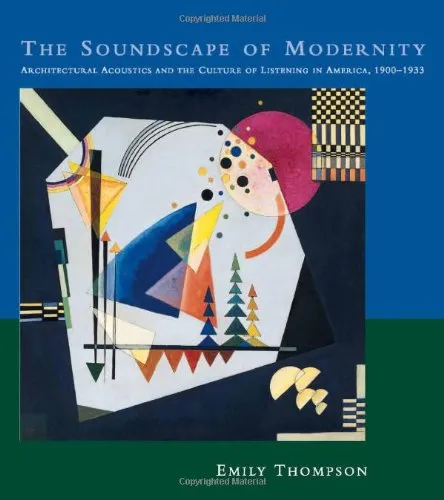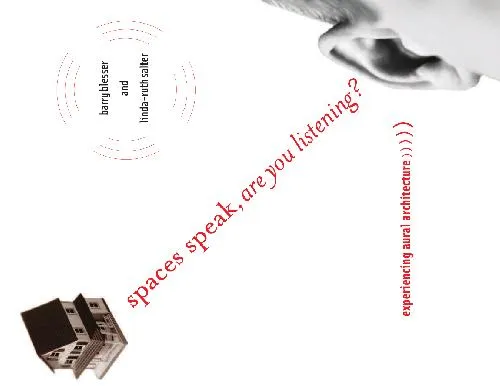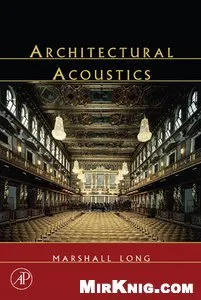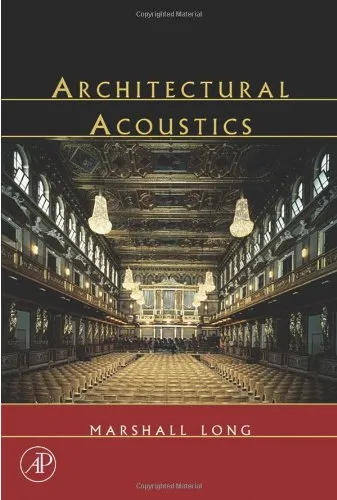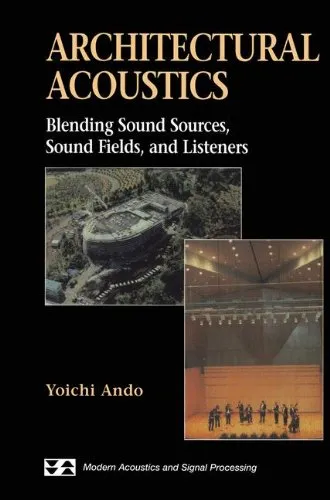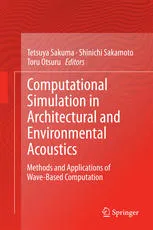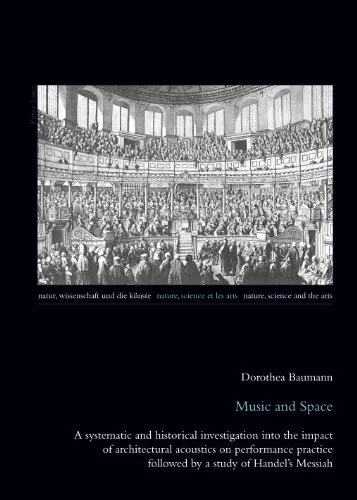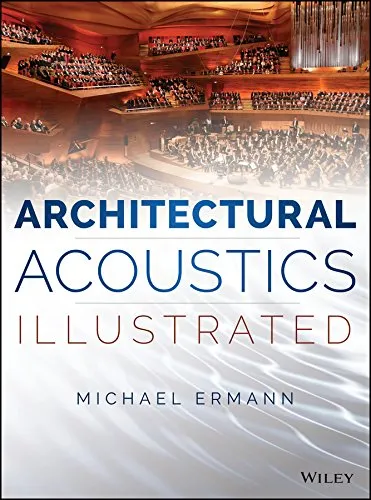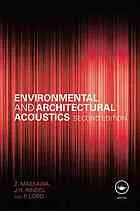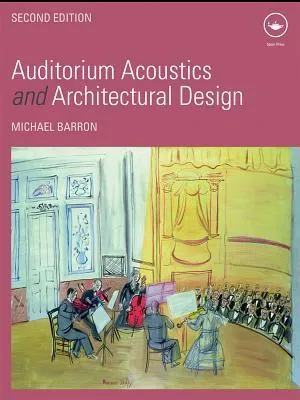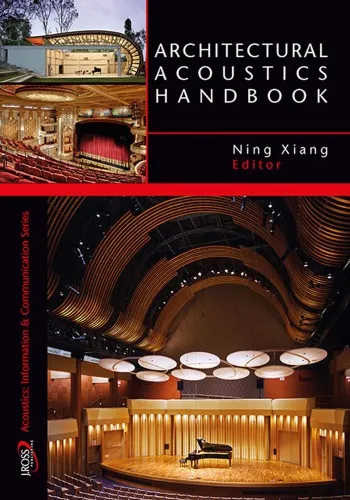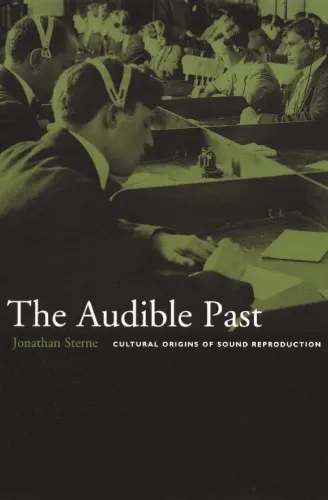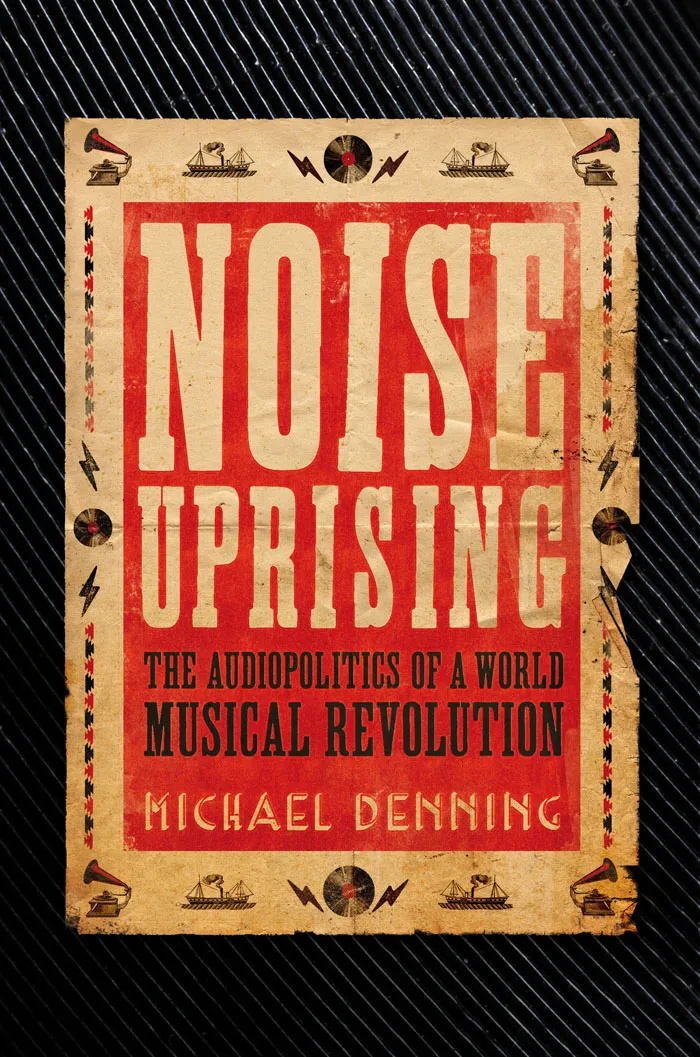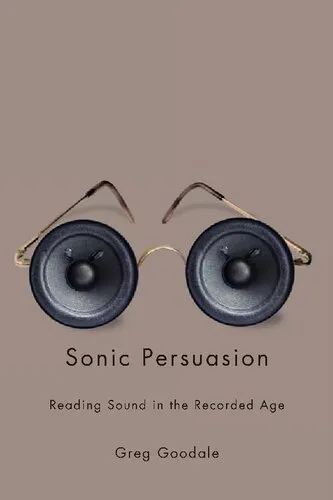The Soundscape of Modernity: Architectural Acoustics and the Culture of Listening in America, 1900-1933
4.5
بر اساس نظر کاربران

شما میتونید سوالاتتون در باره کتاب رو از هوش مصنوعیش بعد از ورود بپرسید
هر دانلود یا پرسش از هوش مصنوعی 2 امتیاز لازم دارد، برای بدست آوردن امتیاز رایگان، به صفحه ی راهنمای امتیازات سر بزنید و یک سری کار ارزشمند انجام بدینکتاب های مرتبط:
معرفی کتاب
کتاب The Soundscape of Modernity: Architectural Acoustics and the Culture of Listening in America, 1900-1933 اثری است بینظیر و پژوهشی عمیق در زمینه صدا، فضا، و فرهنگ شنیداری در جامعه مدرن آمریکا. این کتاب که به قلم امیلی تامپسون نوشته شده است، تلفیقی از تاریخ، معماری، و فناوری است که نگاه جدیدی به رابطه جوامع شهری و چشمانداز صوتی آنها ارائه میدهد. با بررسی دوران انتقال از قرن نوزدهم به قرن بیستم، این اثر تحولات مهم در علم Architectural Acoustics را تحلیل نموده و چگونگی تأثیر آن بر عادتها و انتظارات شنیداری جامعه را توضیح میدهد.
خلاصهای از کتاب
این کتاب با تمرکز بر تحول اساسی در معماری صوتی و فرهنگ شنیداری آمریکا بین سالهای 1900 تا 1933 آغاز میشود. تامپسون توضیح میدهد که چگونه ابداع و پیشرفتهای تکنولوژی مانند اختراع میکروفون، بلندگوها، و فناوری ضبط صدا باعث تغییر اساسی در برداشت انسانها از صدا و فضا شد. او به مطالعهی مکانهایی مانند سالنهای کنسرت، سینماهای اولیه، و فضاهای عمومی مدرن میپردازد تا نشان دهد چگونه صدا به یکی از عناصر کلیدی در طراحی معماری تبدیل شد.
یکی از بخشهای کلیدی این کتاب به تحقیق در مورد همکاری متخصصان در زمینههای مختلف میپردازد. مهندسان صوت، معماران، و طراحان شهری برای خلق فضاهایی که بتوانند انتظارات شنیداری عصر جدید را برآورده کنند، تلاش کردند. تامپسون توانایی بینظیری در پیوند دادن هنر، علم و تاریخ در داستانی مهیج دارد که نگاه شما را به گذشتهای پر جنبوجوش و تاثیرگذار میبرد.
نکات کلیدی کتاب
- تحلیل جامع از تحول در فرهنگ شنیداری جوامع مدرن آمریکا.
- بررسی تاثیر پیشرفت فناوری بر تجربه صوتی انسانها.
- مطالعه جامع و دقیق از Architectural Acoustics و ارتباط آن با نیازهای فرهنگی و اجتماعی.
- توجه به نحوه تغییر در طراحی فضاهای عمومی و خصوصاً اماکن فرهنگی نظیر سینما و سالنهای کنسرت.
- بازتاب تعامل میان فناوری و هویت فرهنگی در قرن بیستم.
نقلقولهای معروف از کتاب
"The interplay between sound and space is not merely a technological relationship but a cultural one."
"Modernity was not just seen—it was heard."
"Through Architectural Acoustics, architects shaped both spaces and the ways people listened within them."
چرا این کتاب اهمیت دارد؟
کتاب The Soundscape of Modernity نه تنها تاریخ زندگیشهری و فرهنگی اوایل قرن بیستم را به تصویر میکشد بلکه به ما نشان میدهد که چگونه فناوری و علم میتوانند دیدگاههای ما به جهان را تغییر دهند. این کتاب نقش حیاتی صدا در فرهنگ و طراحی مدرن را برجسته میکند و توجه ما را به تأثیری که صدا بر تجربه انسانی دارد، جلب میکند. اهمیت دیگر این اثر در رویکرد میانرشتهای آن است که مرزهای بین تاریخ، معماری، و تکنولوژی را کمرنگ میکند و به ما نشان میدهد که چگونه این عناصر بهطور هماهنگ در شکلگیری جوامع مدرن نقش ایفا میکنند.
علاوه بر این، این کتاب برای معماران، مهندسان صوت، تاریخنگاران، و علاقهمندان به فرهنگ شنیداری بسیار ارزشمند است، زیرا دیدگاههای جدیدی برای مطالعه صدا و فضا ارائه میدهد. فهم کامل تحولات دوران مدرن بدون شناخت این جنبههای مهم فرهنگی غیرممکن است و همین امر باعث شده که این اثر از اهمیتی بیبدیل برخوردار باشد.
Introduction to "The Soundscape of Modernity: Architectural Acoustics and the Culture of Listening in America, 1900-1933"
"The Soundscape of Modernity" is a profound exploration of the intersection between sound, architecture, and cultural transformation in early 20th-century America. Through meticulous research and eloquent storytelling, this book delves into how modern technologies, architectural advancements, and new cultural perspectives collectively shaped the way people heard and understood the world around them during a pivotal time in history. By examining key figures, spaces, and technologies, the book highlights how changing attitudes toward sound and acoustics influenced modern architecture as well as human perception of the auditory experience.
Within the pages of this book, readers will journey through the fascinating evolution of soundscapes during a transformative period in American history, starting with the emergence of modern architectural acoustics at the turn of the 20th century. It investigates the work of influential architects, acousticians, physicists, and cultural commentators who sought to control, manipulate, and refine the sonic environments in which people lived, worked, and listened. This is a book not only about acoustics but also about the changing ways in which people conceptualized listening, silence, noise, and communication. An essential read for those interested in architecture, cultural history, or audio technology, it reveals sound as a central element in the modern experience.
Detailed Summary of the Book
"The Soundscape of Modernity" provides a detailed investigation of how the built environment and the technology of the early 20th century redefined the auditory experience. The book begins with the development of architectural acoustics as a scientific discipline, especially through the pioneering work of Wallace Sabine, who was instrumental in creating the field of acoustic design. His revolutionary work at Harvard University on computing reverberation times laid the foundation for modern acoustics. The book examines how architects and engineers applied this newfound knowledge to create iconic spaces such as concert halls, theaters, and churches that embodied the cutting-edge sound design of the era.
Moving beyond technical advances, the book explores broader cultural shifts that reframed how society understood sound itself. The rise of industrial noise, the growing popularity of recorded performances, and the development of radio broadcasting all contributed to redefining societal perceptions of sound and silence. In each of these domains, technologies like soundproof materials, electrical amplification, and reverberation control played critical roles.
Throughout the narrative, you'll also find discussions of how spaces like New York’s Radio City Music Hall and Boston's Symphony Hall exemplified the blending of aesthetic ambition and technological innovation. Furthermore, the book places the science of sound within the context of the cultural tensions of the time, including urbanization, modernism, and the search for control over chaotic environments. Ultimately, "The Soundscape of Modernity" reveals the intertwined nature of technology, architecture, and culture, showing that listening is as much shaped by ideology as by science or design.
Key Takeaways
- The evolution of architectural acoustics as both a science and an art form.
- How the urban soundscape of early 20th-century America reflected broader societal changes, including industrialization and modernism.
- The cultural implications of technologies like soundproofing, amplification, and radio broadcasting.
- The influence of figures such as Wallace Sabine on redefining our understanding of how sound behaves in enclosed spaces.
- How changes in soundscapes ultimately reshaped the cultural habits of listening and perceiving sound.
Famous Quotes from the Book
"Silence, as it was encountered in the concert hall or the modern soundproofed building, was no longer natural silence but instead a silence that had been manipulated, measured, and controlled."
"The soundscape of modernity is not merely a backdrop to history, but a vital element of modern experience itself."
"Architectural acoustics provided a language for controlling sound, but it also influenced the way people understood listening as an act anchored in modern scientific principles."
Why This Book Matters
"The Soundscape of Modernity" offers an invaluable perspective on the historical interplay of architecture, technology, and culture. In an age where sound is often taken for granted, this book reminds us that the auditory environment we occupy is the result of conscious choices and technological advancements. Whether it is the serene stillness of a well-designed concert hall or the cacophony of an urban street, our soundscapes shape both the way we experience the world and the way we think about it.
By connecting the development of acoustic science to broader cultural movements, the book challenges readers to consider how technology affects perception and, in turn, how perception influences culture. It underscores the idea that sound is not neutral; it carries with it ideals, cultural meanings, and power dynamics. This makes the book essential not only for historians of architecture and technology but for anyone curious about the ways in which sound continues to shape modern life.
دانلود رایگان مستقیم
شما میتونید سوالاتتون در باره کتاب رو از هوش مصنوعیش بعد از ورود بپرسید
دسترسی به کتابها از طریق پلتفرمهای قانونی و کتابخانههای عمومی نه تنها از حقوق نویسندگان و ناشران حمایت میکند، بلکه به پایداری فرهنگ کتابخوانی نیز کمک میرساند. پیش از دانلود، لحظهای به بررسی این گزینهها فکر کنید.
این کتاب رو در پلتفرم های دیگه ببینید
WorldCat به شما کمک میکنه تا کتاب ها رو در کتابخانه های سراسر دنیا پیدا کنید
امتیازها، نظرات تخصصی و صحبت ها درباره کتاب را در Goodreads ببینید
کتابهای کمیاب یا دست دوم را در AbeBooks پیدا کنید و بخرید
1297
بازدید4.5
امتیاز0
نظر98%
رضایتنظرات:
4.5
بر اساس 0 نظر کاربران
Questions & Answers
Ask questions about this book or help others by answering
No questions yet. Be the first to ask!
